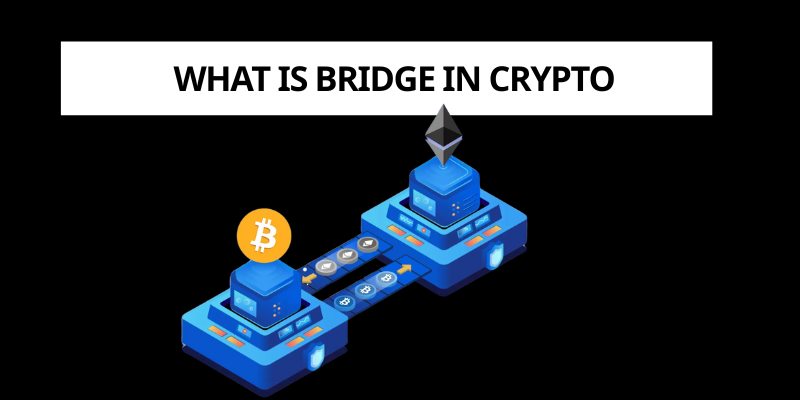In the dynamic world of cryptocurrency, the question what is bridge in crypto has become increasingly relevant as blockchain ecosystems expand. A crypto bridge, also known as a cross-chain bridge, is a protocol that enables the seamless transfer of assets and data between different blockchain networks, addressing the critical challenge of interoperability. As blockchains like Ethereum, Solana, and Polygon operate in isolation with distinct rules and protocols, bridges act as vital connectors, fostering collaboration and unlocking new opportunities.
What Is Bridge in Crypto?
At its core, what is bridge in crypto refers to a technology that links two or more blockchains, allowing them to communicate and share resources. Imagine two islands—each representing a blockchain like Bitcoin or Ethereum—unable to interact directly. A crypto bridge serves as a pathway, enabling users to move tokens, such as transferring ETH from Ethereum to Solana, without relying on centralized exchanges. This process enhances efficiency, reduces costs, and expands access to decentralized applications (dApps) across ecosystems.

Bridges typically operate using a “mint-and-burn” or “lock-and-mint” mechanism. When a user bridges assets, the original tokens are locked or burned on the source blockchain, and an equivalent “wrapped” token is minted on the destination blockchain. For example, bridging Bitcoin to Ethereum creates Wrapped Bitcoin (WBTC), an ERC-20 token pegged to BTC’s value. This ensures the total supply remains constant, preserving economic integrity.
Types of Crypto Bridges
Understanding what is bridge in crypto requires exploring the various types of bridges, each with distinct operational models:
Trusted (Centralized) Bridges: Managed by a central entity, these bridges, like Binance Bridge, prioritize speed and low fees but require users to trust the operator. They are faster but less decentralized, posing risks like custodial theft.
Trustless (Decentralized) Bridges: Powered by smart contracts, trustless bridges, such as Wormhole, operate without a central authority, relying on code and algorithms. They offer greater decentralization but can be costlier and vulnerable to smart contract bugs.
Unidirectional vs. Bidirectional Bridges: Unidirectional bridges, like Wrapped Bitcoin, allow one-way transfers (e.g., BTC to Ethereum), while bidirectional bridges, such as Polygon Bridge, enable two-way asset movement.
Federated Bridges: Operated by a group of trusted validators, these bridges balance centralization and decentralization, as seen in Wanchain’s model.
Each type addresses specific use cases, from cost efficiency to enhanced security, shaping how users navigate the question what is bridge in crypto.
Benefits of Crypto Bridges
Crypto bridges are transformative, offering several advantages:
- Bridges break down silos, allowing blockchains to share assets and data. For instance, users can bridge ETH to Polygon for lower transaction fees while accessing Ethereum’s dApps.
- Bridging avoids the high fees and delays of centralized exchanges. Moving assets to layer-2 networks like Arbitrum reduces gas costs significantly.
- Bridges enable users to leverage DeFi protocols across chains, such as staking on Solana’s Raydium or lending on Ethereum’s Aave.
- Bridges foster innovation by allowing developers to build cross-chain applications, combining the strengths of multiple networks.
Risks and Challenges
Despite their potential, crypto bridges face significant risks, a critical aspect of understanding what is bridge in crypto:
- Bridges are prime targets for hackers. In 2022, the Wormhole bridge lost $325 million due to a smart contract exploit, and Chainalysis reported that 69% of 2022’s crypto thefts targeted bridges.
- Trusted bridges, like Binance Bridge, rely on a single entity, raising concerns about censorship or fund mismanagement.
- Cross-chain transactions involve intricate paths, complicating monitoring and risking issues like transaction reversals if finality is not guaranteed.
- As bridges handle significant value, they attract regulatory attention, requiring compliance with anti-money-laundering (AML) standards.
Users must conduct thorough due diligence, reviewing smart contract audits and community feedback, to mitigate these risks.

The Future of Crypto Bridges
In 2025, the question what is bridge in crypto is evolving as developers innovate to enhance security and functionality. Multi-chain bridges, connecting more than two blockchains, are gaining traction, promising a more integrated ecosystem. Smart contract-enabled bridges are automating complex tasks like cross-chain lending, while user-friendly interfaces, such as Phantom’s Cross-Chain Swapper, simplify the bridging process.
Security remains a priority, with projects investing in rigorous audits and trustless designs to counter exploits. The rise of layer-2 solutions and alternative layer-1 chains, like Solana and Arbitrum, underscores the need for robust bridges to maintain liquidity and interoperability.
The question what is bridge in crypto reveals a cornerstone of blockchain innovation. Crypto bridges enable interoperability, connecting isolated networks to facilitate asset transfers, reduce costs, and unlock DeFi opportunities. While challenges like security risks and regulatory scrutiny persist, advancements in trustless designs and multi-chain connectivity are paving the way for a seamless Web3 future.
For investors and developers, understanding what is bridge in crypto is key to navigating the decentralized landscape, harnessing the full potential of blockchain technology.

